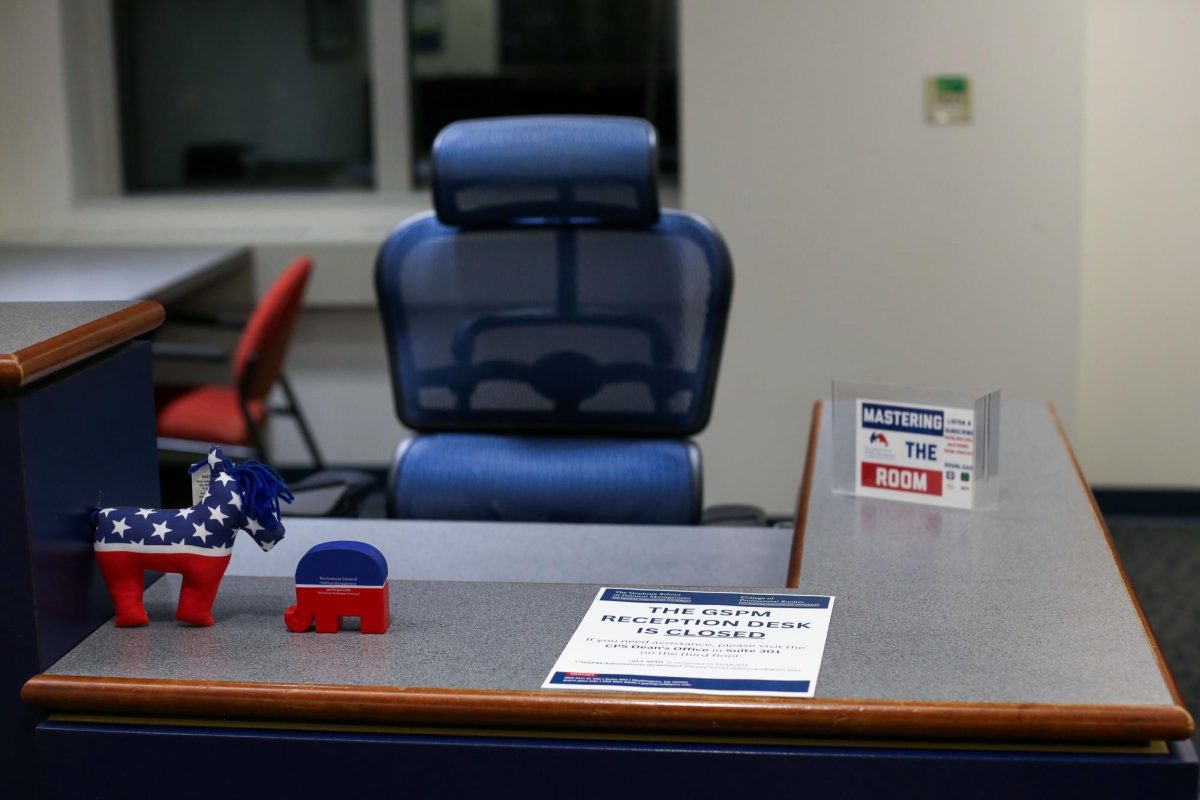The percentage of students pursuing Bachelor of Science degrees more than doubled over the past five years as GW’s schools rolled out at least 13 programs during the same time frame.
The number of students pursuing a Bachelor of Science degree leaped from 15 percent in 2017 to 31 percent of all students in 2022, according to enrollment data. Schools like the Elliott School of International Affairs, the School of Business and the Columbian College of Arts and Sciences spearheaded at least 13 new Bachelor of Science degree programs since 2017, according to a Hatchet analysis of degree offerings and enrollment data.
Provost Chris Bracey said the rise in the number of students in Bachelor of Science degrees resulted from changes to how officials categorize majors, the launch of new degrees, an increase in the number of students double majoring with a STEM major and a rise in the number of students interested in STEM disciplines.
“Students have organically migrated to STEM disciplines, resulting in a natural increase in B.S. degree recipients,” he said in an email. “This could be attributable to subject matter interest, job prospects or any number of considerations.”
Former University President Thomas LeBlanc proposed a controversial initiative in September 2019 to increase the number of students in STEM majors to 30 percent and decrease the total number of undergraduates by 20 percent, but officials declared the plan “obsolete” in November 2020 due to the COVID-19 pandemic.
Faculty members who teach in the humanities and social sciences criticized LeBlanc’s plan in September 2020, saying the initiative could lead to “major” cuts to their departments.
The core STEM fields are engineering, biological and biomedical sciences, mathematics and statistics and physical sciences, according to the Department for Homeland Security. While Bachelor of Science degrees cover the core STEM fields, they can also apply to social sciences like political science and psychology, depending on the courses students take.
CCAS department chairs and program directors said they developed the Bachelor of Science degrees in response to heightened interest from students and a growing demand for STEM skills like computer programming and data science in the workforce.
David Rain, the chair of the geography department, said geography faculty launched the Bachelor of Science degree in environmental and sustainability science in fall 2021, which he said 34 students are currently pursuing.
Rain said faculty in the geography department launched the degree after noticing that some of their students were hesitant to engage with STEM content within the discipline while other students were interested in the intersection between STEM fields like biology and geography.
Rain said students are increasingly drawn to pursuing Bachelor of Science degrees because possessing STEM-related skills, like data analysis, increases their job prospects after college.
Nearly 3.5 million new STEM jobs will need to be filled by 2025, according to the Society for Human Resource Management.
“We also get students who have taken lots of biology and physics, and they’re not afraid of science and they’re not afraid of formulas,” he said. “And we wanted to have something more for them, especially if they come in with AP credits. So we knew there was kind of a market need for the Bachelor of Science degree.”
Rain said geography students’ interest in understanding the science behind climate change also influenced the department to create the degree in environmental and sustainability science.
“To do climate change, you really need to understand the science of it,” he said. “We get students who take our courses because they want to understand it. It’s complicated, it’s very complicated. But it’s important for our students to know that stuff in order to be leaders in the future, which is what we want.”
Eric Lawrence, the chair of the political science department, said he chaired the committee that created the department’s Bachelor of Science degree in political science in 2016. The number of students pursuing a Bachelor of Science degree in political science increased from one to 17 between 2016 and 2022, according to institutional research data.
He said political science students who were also majoring in a STEM subject expressed interest in having more overlap between their two majors leading up to the creation of the Bachelor of Science degree in political science. Students pursuing the degree are required to take Single-Variable Calculus II, an intro-level statistics course of their choice and four additional courses in statistics, mathematics and computer science, according to the department’s website.
“I’ve had a number of students who were double majoring in computer science or double majoring in stats, and they would say there was so little overlap,” he said. “That was really a challenge.”
Students pursuing a Bachelor of Science degree and a Bachelor of Arts degree at the same time must complete 150 credit hours, according to the University bulletin.
Ryan Engstrom, the director of the data science program, said he and other faculty members decided to launch the Bachelor of Science degree in data science in fall 2020 after noticing a greater need for professionals to understand data in a variety of fields, like geography and journalism.
The number of students pursuing a Bachelor of Science degree in data science increased from three to 18 students from 2021 to 2022, according to institutional research data. The program also offers a minor in data science and a Master of Science in data science.
“We’ve been incredibly happy with the number of majors we’ve gotten,” he said. “We’re at a place where we have plenty of majors in it to say that. I’m trying to get people to teach for us, so that’s kind of been my job is to try to handle all these students that are interested in the major.”
Artem Gulish, a senior policy strategist and research faculty at Georgetown University’s Center on Education and the Workforce, said the increase in Bachelor of Science degrees is less distinct nationally because each higher education institution can classify degree programs as Bachelor of Arts and Bachelor of Science through different parameters. He said the number of STEM majors among undergraduates across the country is on the rise in fields like computer science as advancing technology has led to an increased demand for STEM graduates in the workforce.
“In general, the distinction of Bachelor of Arts versus Bachelor of Science is generally just up to the college,” he said.
Lindsay Larson contributed reporting.







